What Are You Looking For?
What Are the Differences Between Natural Stone Categories?
Jul 14, 2025Natural stone is a timeless and high-performance material used across architecture, construction, and design. However, not all stones are created equal. Depending on their mineral composition, geological origin, and physical properties, natural stones fall into several major categories, each with distinct strengths, aesthetic value, and optimal applications.
Now, we'll break down the key differences between the main types of natural stone: marble, granite, quartzite, travertine, limestone, sandstone and onyx, to help industry professionals, designers, and end-users make more informed decisions.

1. Marble: Refined Elegance with Limitations
Geological Type: Metamorphic
Main Component: Calcite (CaCO₃)
Texture & Appearance: Veined, polished, soft aesthetics
Marble is prized for its luxurious appearance and fine polish. From the timeless Carrara White to the richly veined Calacatta Gold, marble delivers high-end aesthetics with natural variation. However, it is relatively soft, prone to scratching, and sensitive to acidic substances. As such, it is best suited for interior applications like flooring, wall cladding, bathroom vanities, and decorative elements.
Best Use: Interior wall & floor, bathroom vanities, art installations
Avoid: Heavy-traffic floors, kitchen countertops without sealing
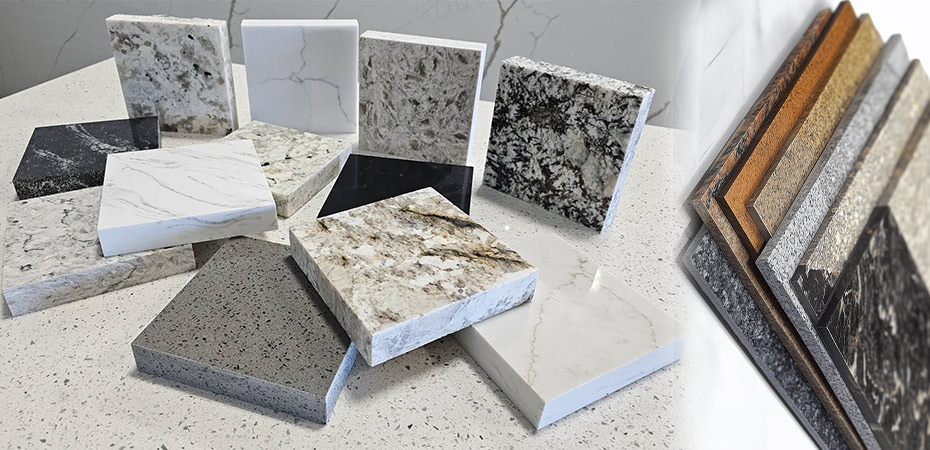
2. Granite: Durability for Heavy-Duty Applications
Geological Type: Igneous
Main Components: Quartz, feldspar, mica
Texture & Appearance: Granular, speckled, dense
Granite is one of the hardest and most durable natural stones available. It resists scratches, stains, and heat, making it a popular choice for kitchen countertops, commercial flooring, and exterior cladding. Granite also comes in a wide range of natural colors, from black granite and grey granite to red granite and green granite.
Best Use: Kitchen countertops, commercial floors, façades
Finish Options: Polished, flamed, honed, leathered
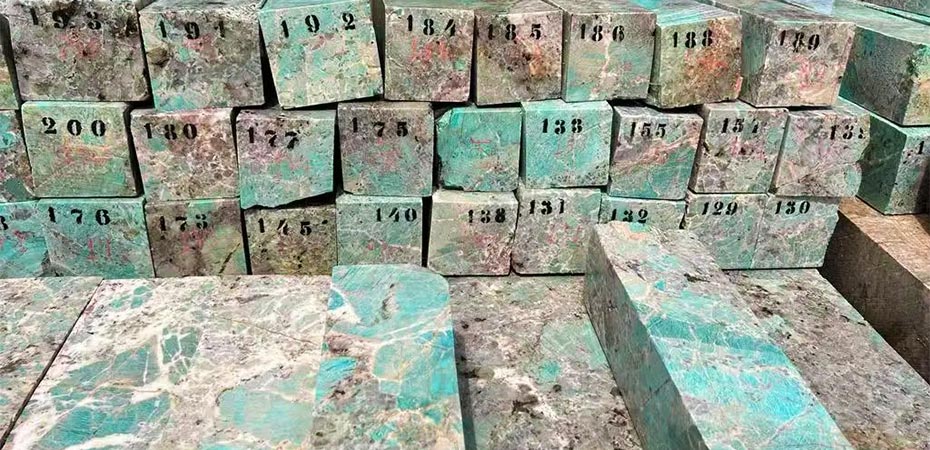
3. Quartzite: Beauty of Marble, Strength of Granite
Geological Type: Metamorphic
Main Component: Quartz (SiO₂)
Texture & Appearance: Crystalline, dramatic veining, high-gloss polish
Quartzite is rapidly gaining popularity as a premium natural stone. It resembles marble in appearance, with elegant veining and rich color, but offers much greater hardness, density, and resistance to etching. This makes quartzite ideal for high-end kitchen countertops, feature walls, and bathroom surfaces.
Best Use: Countertops, shower walls, statement surfaces
Notable Stones: Taj Mahal, Four Seasons Excalibur, Imperial Green
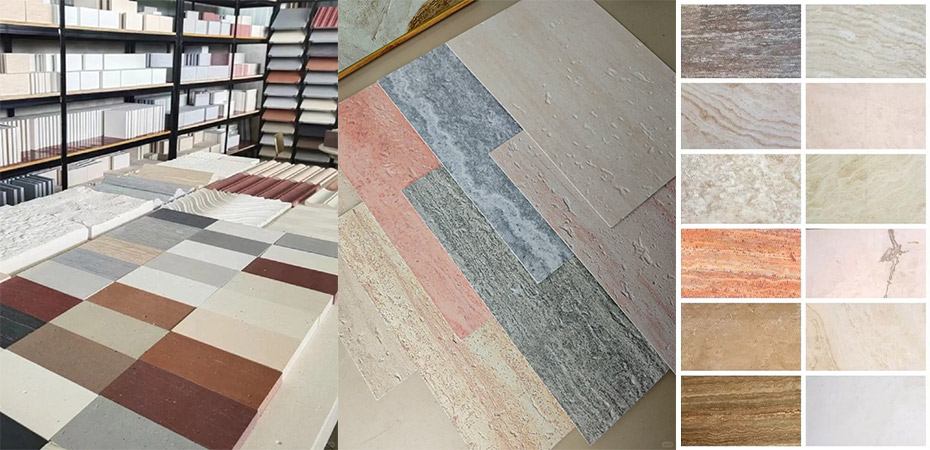
4. Travertine: Porous but Timeless
Geological Type: Sedimentary (a form of limestone)
Main Component: Calcium carbonate
Texture & Appearance: Porous, pitted surface, warm tones
Travertine is formed near mineral springs and features natural cavities that may be filled or left open for effect, the most typical one is undoubtedly the Italian Classic Travertine. Common in classical architecture, travertine offers warm aesthetics, but its porosity makes it vulnerable to staining and moisture.
Best Use: Wall tiles, pool decks, exterior columns
Avoid: Kitchens or high-moisture areas unless sealed
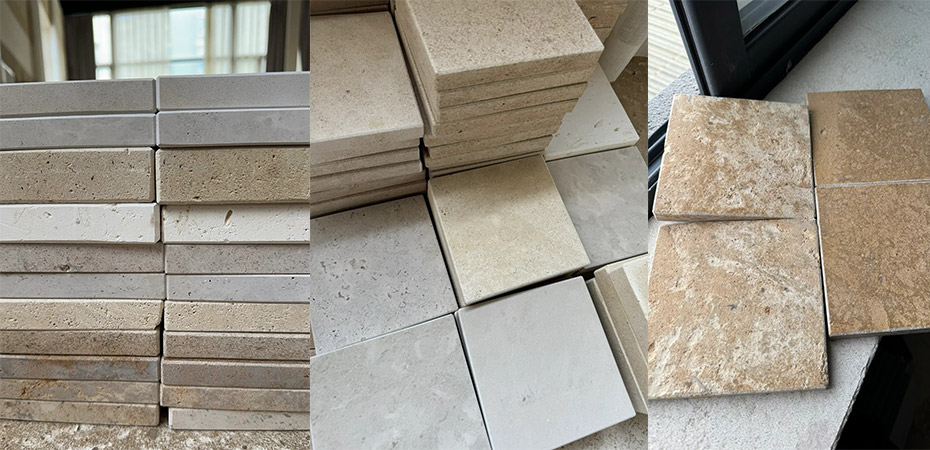
5. Limestone: Subtle Beauty with Softer Traits
Geological Type: Sedimentary
Main Component: Calcite
Texture & Appearance: Fine-grained, soft tones, uniform
Limestone is a sedimentary rock formed from marine deposits. White limestone is the most common, also the grey limestone, and the beige limestone. Its subtle color palette, typically beige, cream, or light gray, makes it ideal for modern and classical design schemes. However, it is porous and softer, requiring sealing and care. It is often used for external cladding, interior flooring, and fireplace surrounds.
Best Use: Facades, interior walls, heritage architecture
Avoid: Wet zones or areas prone to staining unless sealed
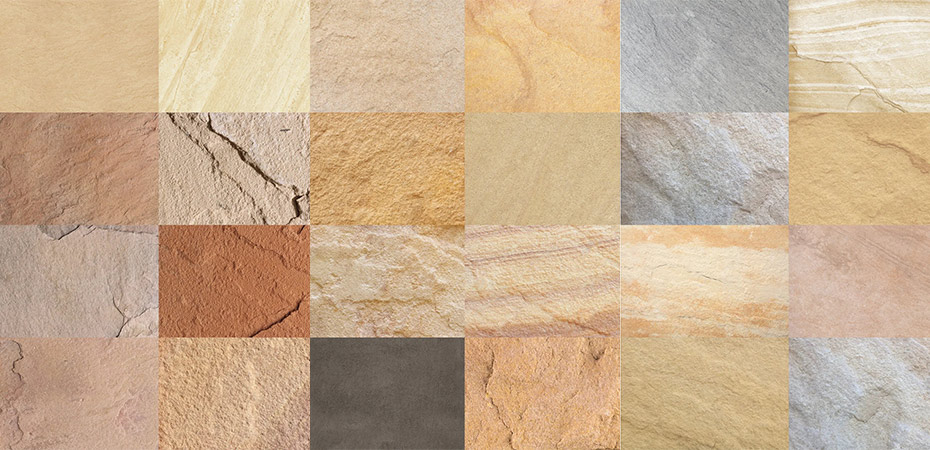
6. Sandstone: Natural, Earthy, and Textured
Geological Type: Sedimentary
Main Component: Quartz grains bound with silica or calcium
Texture & Appearance: Coarse, layered, earthy colors
Sandstone offers a natural, rustic look and excellent slip resistance. Its coarse texture makes it especially suitable for landscape paving, pool surrounds, and garden paths. However, it can weather over time and is less dense than granite or quartzite.
Best Use: Outdoor paving, landscaping, retaining walls
Finish Options: Natural split, honed, brushed
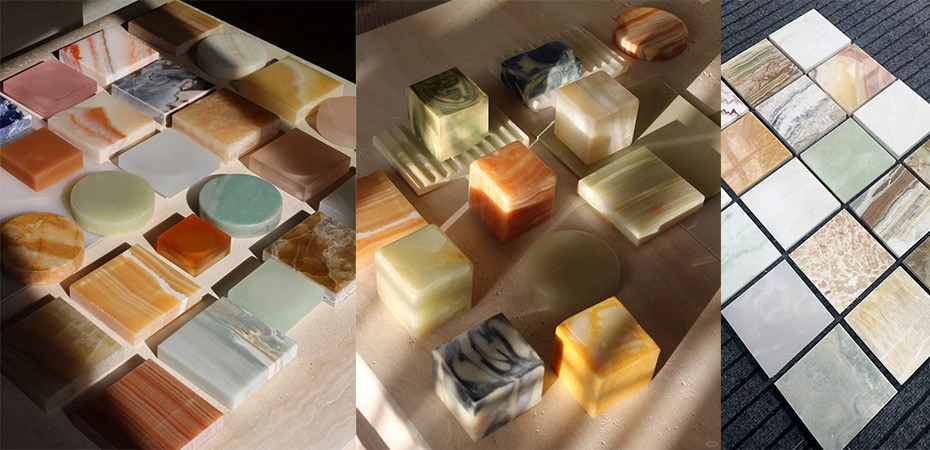
7. Onyx: Translucent Luxury with Delicate Nature
Geological Type: Sedimentary (a variety of banded calcite)
Main Component: Calcite (CaCO₃)
Texture & Appearance: Striking banded layers, semi-translucent, high polish
Onyx is one of the most visually dramatic stones in the natural stone family. Its defining characteristic is its semi-translucent body, allowing it to be backlit for stunning visual effects. Featuring bold veining, exotic colors, and intricate banding, onyx is used primarily for feature walls, bar fronts, reception desks, and decorative panels.
However, onyx is much softer and more brittle than marble or granite. It scratches easily and requires careful handling during fabrication, installation, and use. Despite its fragility, onyx remains a favorite for luxurious interiors where visual impact outweighs durability.
Best Use: Backlit feature walls, decorative cladding, artistic installations
Avoid: Heavy-use areas, kitchen countertops
Notable Colors: Green onyx, honey onyx, pink onyx, white onyx, blue onyx
Matching Stone to Application
Understanding the properties of each natural stone type allows for smarter design and construction choices. While marble and limestone offer elegance, granite and quartzite deliver resilience. Onyx and sandstone provide character and texture, while travertine lends historic warmth.
Selecting the right stone is a balance between performance, maintenance, aesthetics, and budget. Whether you're an architect, fabricator, or contractor, matching the correct stone to the project's demands is key to long-term satisfaction and performance.